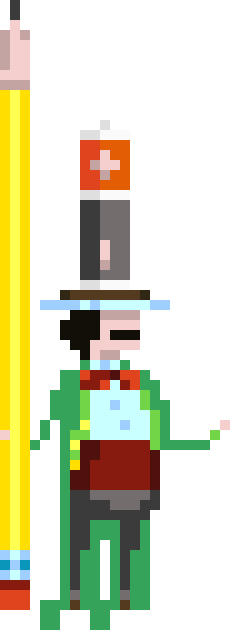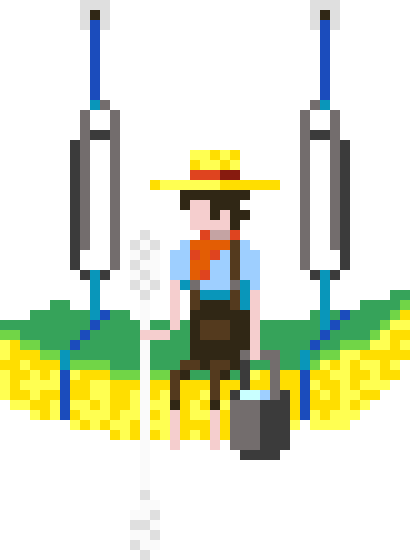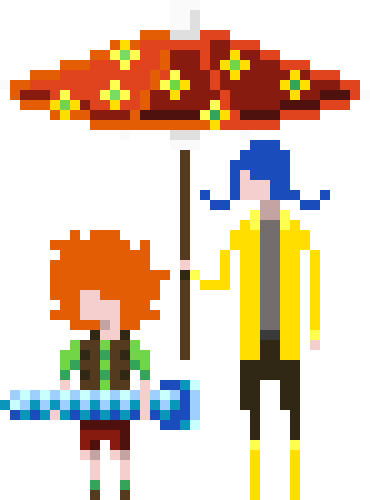



Broom texture, also sometimes called linear, is a unique texture that is created by using a broom, or other bristled or tined tool, to create long parallel lines across a surface. These lines emulate the striations of a rock. Compared to tree texture, broom texture has closer, more uniform striations that run the length of the entire surface.
Broom, also known as linear, is a unique texture that is created by using a broom to create long parallel lines across the surface. This emulates the striations of a rock. Compared to tree, it has closer, uniform striations in full length strokes across the surface.
Broom is not to be confused with a stomp texture created with a common angle broom. While it is possible to use a hard bristled push broom for this texture, it's not recommended due to the long handle and broom head width. More commonly, a linear trowel or comb is used. The linear trowel is usually a small trowel featuring hard bristles. Different sized combs with rigid tines can also be used. There are also uneven combs that create a more varied pattern.
While applying the broom texture is straightforward, it can be difficult to match the broom texture after a repair due to the wide range of tools that could be used.
The texture can trap dust and dirt, and it can be difficult to clean the linear ridges without damaging the texture.







Start with at least a Level 3 drywall finish, but unless you are doing a very light coat, a Level 4 is recommended. Apply an uneven coat of all purpose joint compound mixed with water to your wall. Smooth it out with a drywall knife making arcing patterns across the wall creating large slightly raised sections. Add more character by making stuttering movements with your knife.
This texture will not cover the whole surface, so the drywall needs to be a smooth surface. Make sure that your wall is at least up to a Level 3 drywall finish. This means that flat joints and interior angles have been taped and have one coat of joint compound smoothed over them. Accessories and fasteners need at least two separate smooth coats.
Note: If you plan on applying the texture thinly, you will need a Level 4 drywall finish.
There's no reason not to use "all purpose" joint compound for broom texture, but other formulations will probably work fine. Mix it in either a 5 gallon bucket or the bucket it came in if that's possible. Mix it by slowly pouring the water in while stirring constantly by hand with a mixing paddle or with an electric drill with a mixing attachment. Keep adding water and mixing until the consistency of the mud is smooth and creamy like a thick paint or pancake batter.
After getting the mud to a good consistency, you want to add sand to the mixture. Different grits of sand and different amounts of sand will create different effects. If you are trying to create a specific look, you'll want to make sure you have a piece of cardboard or scrap drywall to test your texture out before you apply it to your whole wall. If you don't mix enough mud for the whole project you are working on at one time, make sure that you remember the sand to mud ratio!
Let the mud sit for a couple minutes to allow any air bubbles to escape. Give it a good stir before use if it's been sitting for a while.
Note: Drywall enthusiasts will not consider your texture skip trowel if there's no added sand. Reasonable people do not disagree on this point.
Now it's time to apply the mud to the wall using your trowel. Take your trowel and grab some mud from your container (or hawk if you're fancy) and start applying it to the wall. You can apply a light coat or a heavy coat depending on the look you are going for, or imperfections you are trying to cover up.
This is where some people might add scars by "scratching" the mud with the trowel, or create knife marks by flicking their wrist when pulling the trowel away from the wall.
Note: Some people will spray on the initial coat of mud. Again, drywall enthusiasts will not consider your texture skip trowel if you do this, but we will not stop you.
As you go, use your trowel or a drywall knife to knock down the texture. You don't need to use a lot of force, just enough to flatten the mud. Different amounts of force will change the final appearance. Use a level of force that produces the texture you prefer. Unlike straight knockdown, you will want to move your knife across the wall in arcing patterns, instead of straight up and down.
Keep your trowel or knife clean while you're doing this. Wipe off excess mud with a damp rag between each stroke.
straight arm long even strokes across the surface, wet mud
plaster, grit?
not quite knock down, but lightly press with trowel after


